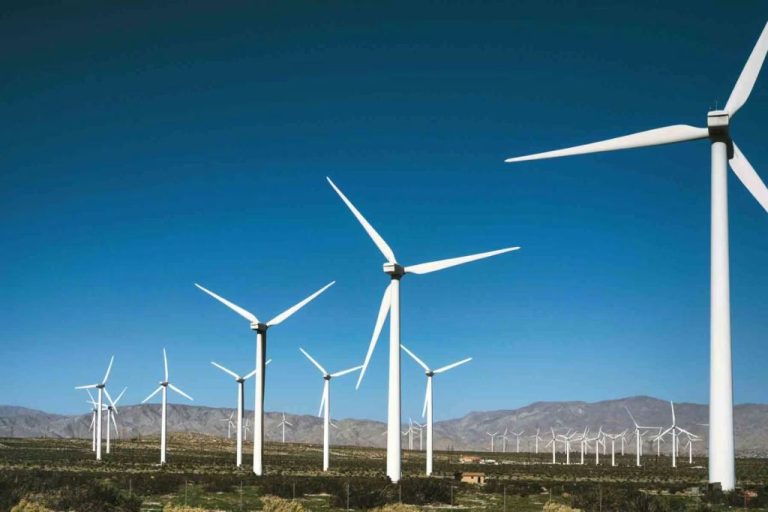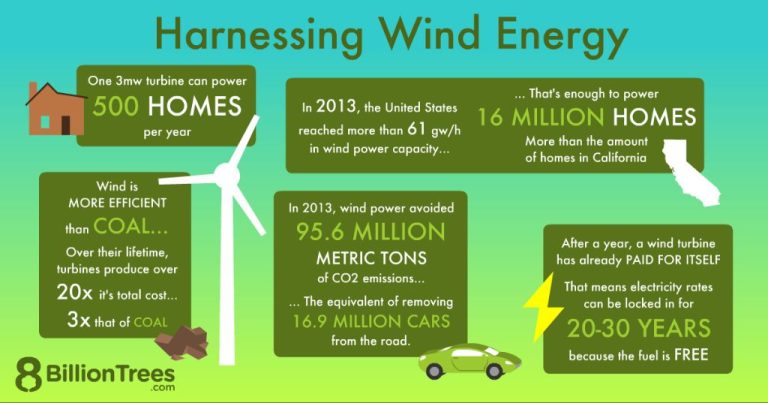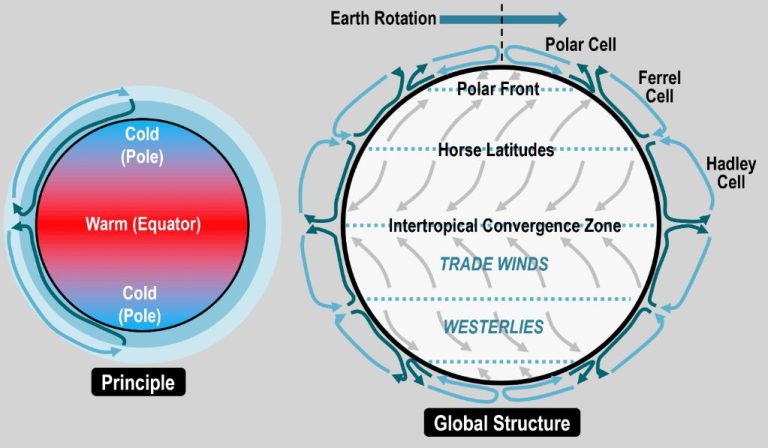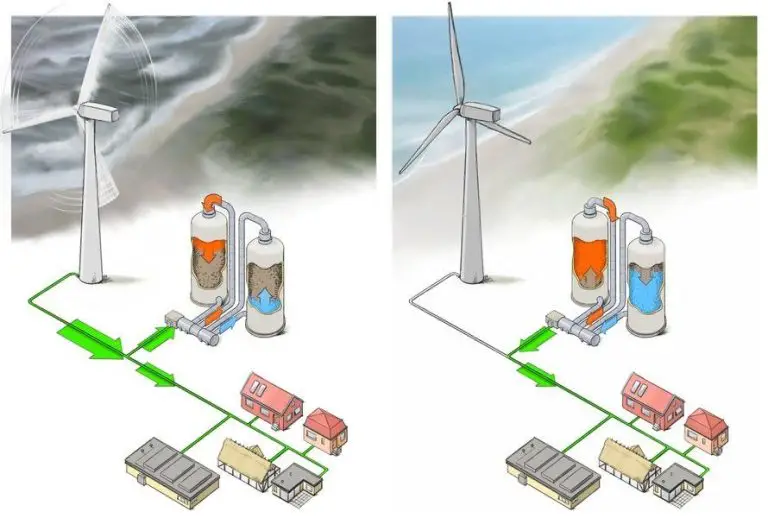Is Wind And Sun Renewable?
Renewable energy sources like wind and solar power are becoming increasingly important as we look to transition away from fossil fuels. Unlike coal, oil, and natural gas, which take millions of years to form, renewables like wind and sunlight are considered “sustainable” energy sources that replenish naturally. But are wind and sunlight truly 100% renewable? In this article, we will take a closer look at wind and solar power to evaluate factors that determine their renewability.
Wind Energy
Wind is a renewable resource that is plentiful around the world and has been used by humans for thousands of years. Wind energy is generated when gusts of air spin large turbine blades to harness kinetic (motion) energy. The wind turns the blades of the giant turbines, which then are connected via gears to generators that convert the mechanical power into electrical energy.
Wind power is sustainable and abundant. The wind resource is massive and unable to be depleted. Wind will blow as long as the sun shines and the Earth rotates. According to the Department of Energy, the total annual available wind energy in the United States alone is 10.9 billion MWh – over 10 times the total U.S. annual electricity consumption. There is more than enough wind to provide for our energy needs now and far into the future.
Wind turbines can reliably generate electricity when installed in areas with good wind speeds of 9 mph or greater. With larger and more efficient turbine designs, wind farms around the world are generating utility-scale amounts of clean, renewable electricity. Overall, wind energy produces over 6% of the world’s electricity demand. As technology improves, wind power is becoming increasingly cost competitive with fossil fuel sources.
Solar Energy
Solar energy is considered a renewable resource because it comes from the sun, which is expected to continue shining for billions of years. The process of harnessing solar energy involves converting sunlight into electricity or heat using photovoltaics (PV) or solar thermal collectors.
PV cells convert sunlight directly into electricity using semiconducting materials that exhibit the photovoltaic effect. When sunlight hits the PV cells, the energy knocks electrons loose, allowing them to flow and produce an electric current. The more intense the sunlight, the more electricity produced.
Solar thermal collectors absorb sunlight to heat water or other fluids that can then be used directly or to produce steam to spin a turbine generator. Concentrated solar power (CSP) systems use mirrors or lenses to focus sunlight onto a receiver, intensifying the heat. This thermal energy can be stored for later use.
Both PV and solar thermal systems produce emissions-free renewable energy from an infinite supply of sunlight. As long as the sun shines, solar energy will be available to harness. The development of more efficient solar technologies will further maximize this abundant renewable resource.
Are They Truly Renewable?
When examining the renewability of wind and solar power, we must look at the long-term lifespan and constraints of these technologies to determine if they can viably provide energy indefinitely without being depleted. At a basic level, wind and sunlight are fueled by forces that are continuously replenished and therefore appear renewable. The sun will continue emitting solar energy and weather patterns will keep generating wind for the foreseeable future. However, the equipment and infrastructure used to harvest these resources have limitations.
Modern wind turbines are built to operate efficiently for around 20-25 years. The mechanical parts wear down over time and older turbine models become obsolete and less efficient compared to newer versions. There is on-going maintenance required to sustain optimal performance. The materials used to manufacture the turbines also require mining and refining of natural resources. However, wind power does not “consume” the wind in the process – just a fraction of the kinetic energy at any given time and location. The same wind flows may be harvested again later. Therefore, the wind itself remains an infinitely renewable resource.
Similarly, the photovoltaic cells used in solar panels can lose efficiency over a couple decades before needing replacement. Producing the silicon and other materials for the panels has environmental impacts. But the sun’s energy cannot be used up – it just arrives at different intensities based on location, weather, and time of day or year. The solar irradiation that isn’t absorbed and converted into electricity at any moment is still available to be captured later. In this way, sunlight remains an unlimited and renewable energy source.
In summary, wind and sunlight themselves are renewable in the purest sense based on natural cycles and forces. But the equipment used to generate usable electricity from them has material and lifespan constraints. With proper maintenance and technological advances, the renewable nature of these resources can continue being harnessed indefinitely into the future.
Wind Renewability Factors
Several factors can impact the long-term renewability of wind energy. Climate change is one significant factor, as shifting weather patterns may alter wind speeds and availability in certain areas over time. For example, if average wind speeds decline in a region due to climate change, the productivity of wind farms there could decrease.
The availability of raw materials and manufacturing capabilities to produce wind turbines is another factor. Wind turbines require metals like steel, fiberglass, rare-earth elements, and other mined resources. A shortage in these materials or manufacturing constraints could potentially hinder the growth of wind energy in the future. Though most turbine components are recyclable, production still depends on sufficient global supplies.
Land constraints could also limit the growth of wind farms in some areas. Wind turbines require large open spaces with consistently strong winds, which are not available everywhere. As prime windy locations reach capacity, expansion may slow without access to new suitable land areas.
Despite these potential long-term limitations, wind energy remains one of the most renewable energy sources available. With proper siting, technological improvements, and managed growth, wind can continue providing clean, renewable power for decades to come.
Solar Renewability Factors
Solar energy depends on photovoltaic panels to convert sunlight into electricity. These panels rely on rare earth metals like indium, gallium, and selenium. While abundant on Earth, these metals are geographically concentrated and require intensive mining and processing. Some estimates suggest indium could be depleted within 50 years at current usage rates.
However, research is underway to recycle these metals from old solar panels and reduce usage per panel. Thin-film panels with alternative semiconductor materials are also being developed to rely less on scarce rare earth metals. With ongoing improvements in recycling, efficiency, and substitution of rare materials, the renewable potential of solar looks promising.
Solar panels themselves can operate for several decades with proper maintenance. The modular nature of solar also allows for selective replacement of underperforming units over time. In summary, while solar does depend on some finite raw materials, innovations in materials science and recycling should enable solar to remain a renewable energy source long-term.
Comparisons to Fossil Fuels
When comparing wind and solar energy to traditional fossil fuel sources like coal, oil, and natural gas, the renewability and sustainability of wind and solar emerge as distinct advantages. Fossil fuels are nonrenewable, meaning only finite reserves exist worldwide. Extraction and consumption of fossil fuels over decades has depleted supplies, necessitating costly and environmentally-damaging practices like fracking to maintain production levels. Burning fossil fuels also directly yields air pollutants and greenhouse gas emissions responsible for climate change and health impacts.
In contrast, wind and solar energy rely on inexhaustible resources that are replenished naturally. The sun continuously beams solar energy to the earth, while wind patterns have cycled for millennia and will persist indefinitely. Harnessing these renewable sources does not diminish or deplete their future availability. Wind and solar facilities also generate power without emitting air and heat-trapping emissions. This provides a healthier and less environmentally damaging mode of electricity production. The renewability and cleanliness of wind and solar give them sustainability advantages over polluting fossil fuels with finite reserves.
Environmental Impacts
Large-scale renewable energy projects like wind and solar farms can have both positive and negative impacts on the environment. On the positive side, renewable energy generates little to no greenhouse gas emissions once built, which helps combat climate change. However, there are some potential downsides.
For wind farms, birds and bats can be killed if they fly into spinning turbine blades. Careful site selection and improved blade designs can help minimize this risk. Wind turbines also make noise as the blades spin, which could disturb local wildlife.
Solar farms take up a lot of land space, so they can potentially disrupt natural habitats and ecosystems. However, they can be designed to allow vegetation and wildlife to coexist to some degree. Some solar panels contain hazardous materials like lead that require proper disposal at end of life.
Overall, while large solar and wind installations have some environmental tradeoffs, most experts agree their impacts are far less than traditional fossil fuel energy. With thoughtful planning and design, renewable projects can minimize their footprint and balance clean energy production with ecological stewardship.
Future Outlook
The future outlook for wind and solar energy is very positive, with projections showing exponential growth in renewable energy generation over the coming decades. Both wind and solar power are expected to continue expanding as costs fall and technologies improve. According to the International Energy Agency (IEA), renewables are projected to account for over 90% of all new power generation capacity through 2026, with solar PV alone providing over 60% of that growth.
The IEA predicts global renewable electricity capacity will increase by over 60% between 2019 and 2024, led by solar PV. The levelized cost of electricity (LCOE) for new solar PV and onshore wind is already cheaper than new coal or gas plants in most countries today. As solar and wind costs decrease further, adoption is expected to accelerate worldwide. Renewables are projected to generate 50% of the world’s electricity by 2050, with wind and solar providing 80% of that renewable generation.
The future growth of wind and solar depends on their ability to provide consistent and reliable energy supply as penetration increases. This will require further grid integration through storage, transmission expansion, demand response and other flexibility solutions. With the proper infrastructure and policies in place, most experts are confident wind and solar can continue displacing fossil fuels for decades to come thanks to their renewable, inexpensive and abundant nature.
Conclusion
In summary, wind and solar energy can be considered renewable resources but they are not perfectly renewable. While the wind and sun themselves will not run out, the materials, land, and other resources needed to harness them have limits. However, wind and solar are still far more renewable than fossil fuels which take millions of years to form naturally.
If managed properly, wind and solar technology can provide clean energy for generations to come. But care must be taken to source materials sustainably, recycle components, and minimize environmental impacts. The outlook is promising as technology continues improving, and wind and solar get cheaper. If we transition from fossil fuels, they may one day become our primary energy sources. Still, no energy source is perfectly renewable forever. The goal is finding the right mix that sustains society while preserving the planet. With wise management of resources, wind and solar can play a major role.





